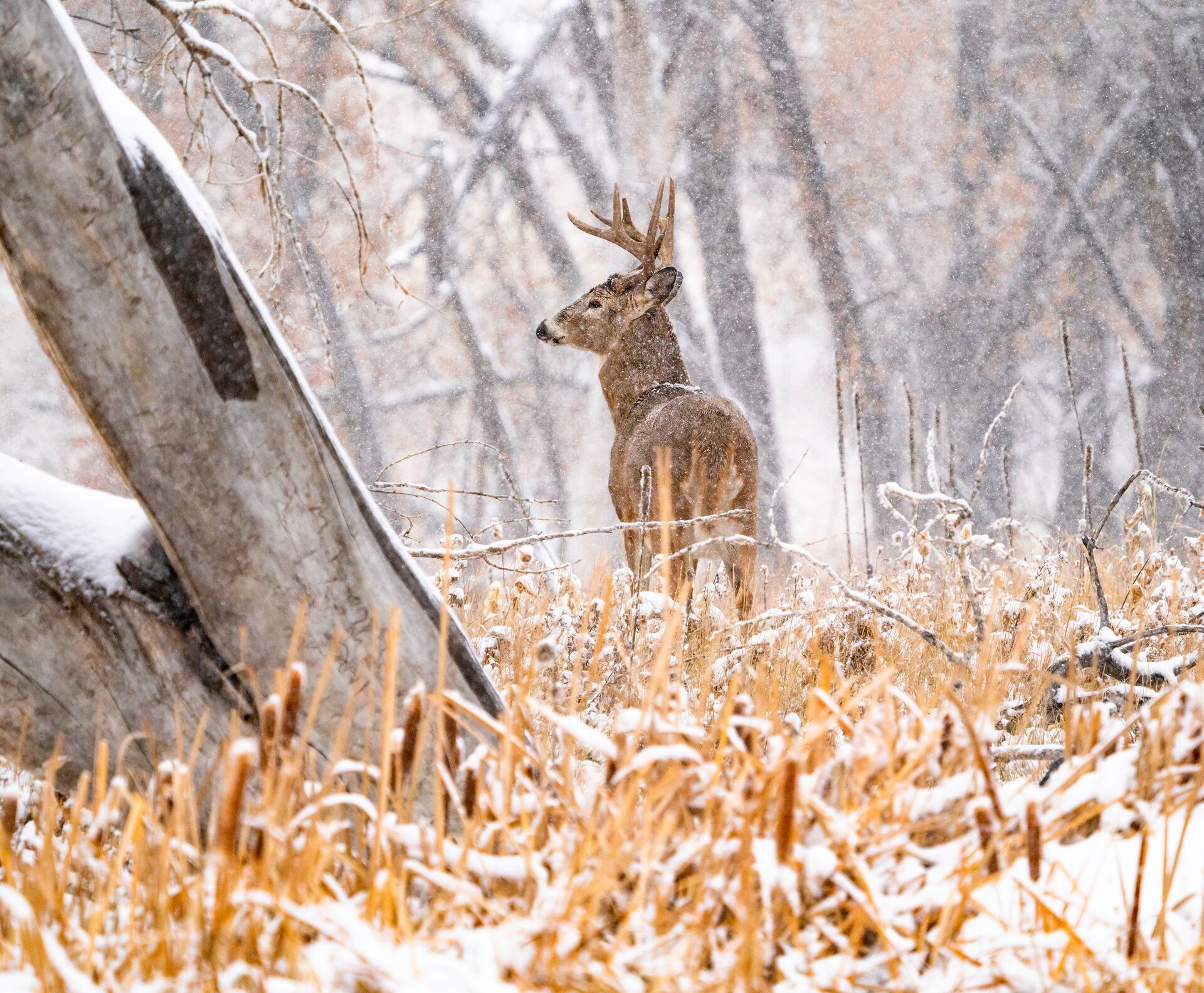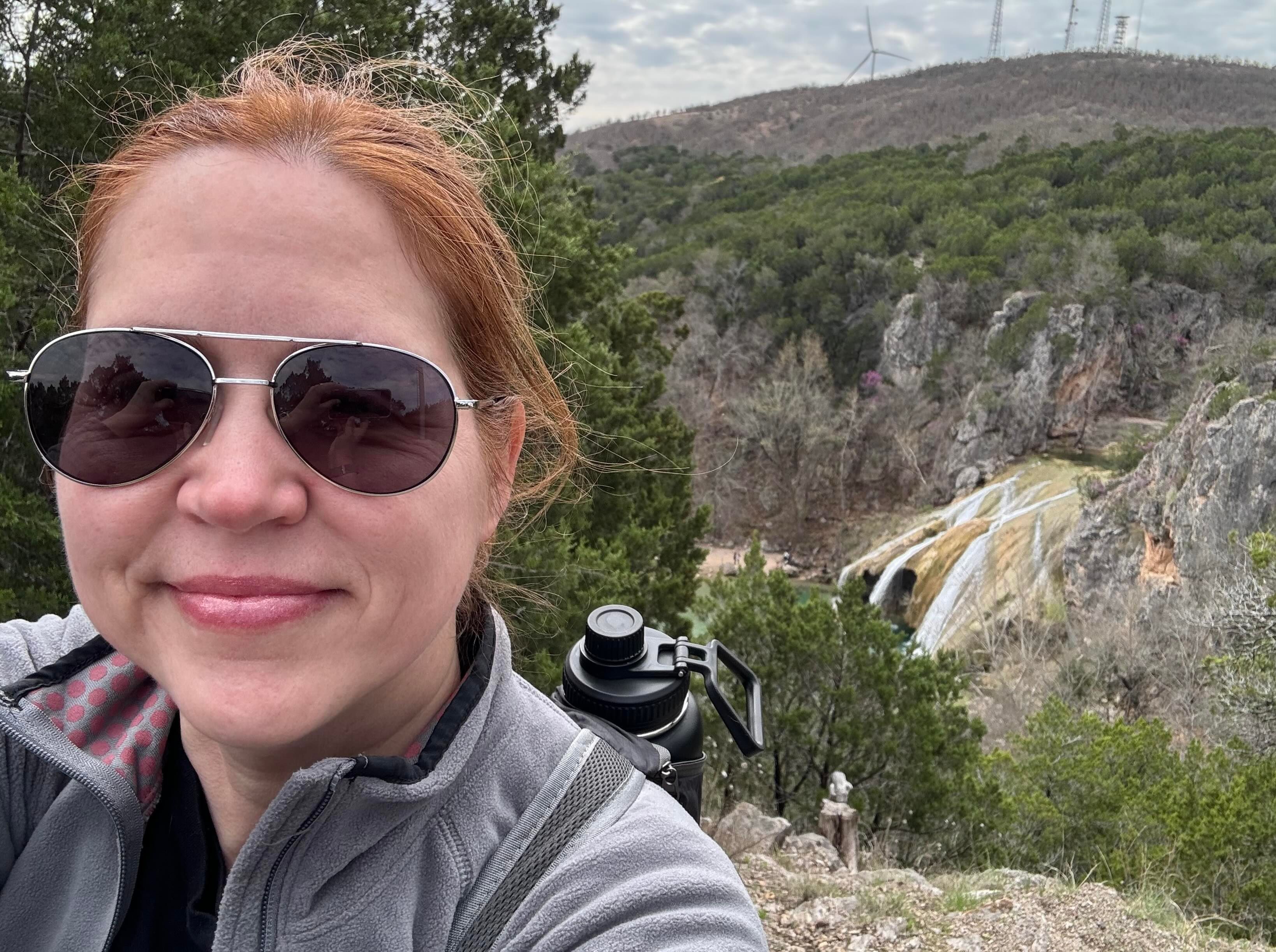While the cold fronts can pose a challenge, the right cold-weather gear plays a crucial role in overcoming this, allowing you to hunt with less pressure and greater visibility in many whitetail environments.
So, if you're thinking your season is already over, can we encourage you to reconsider? This blog looks at cold-weather deer hunting strategies and the benefits of a cold-weather hunt so you can prepare for late-season success with the right gear and tips.
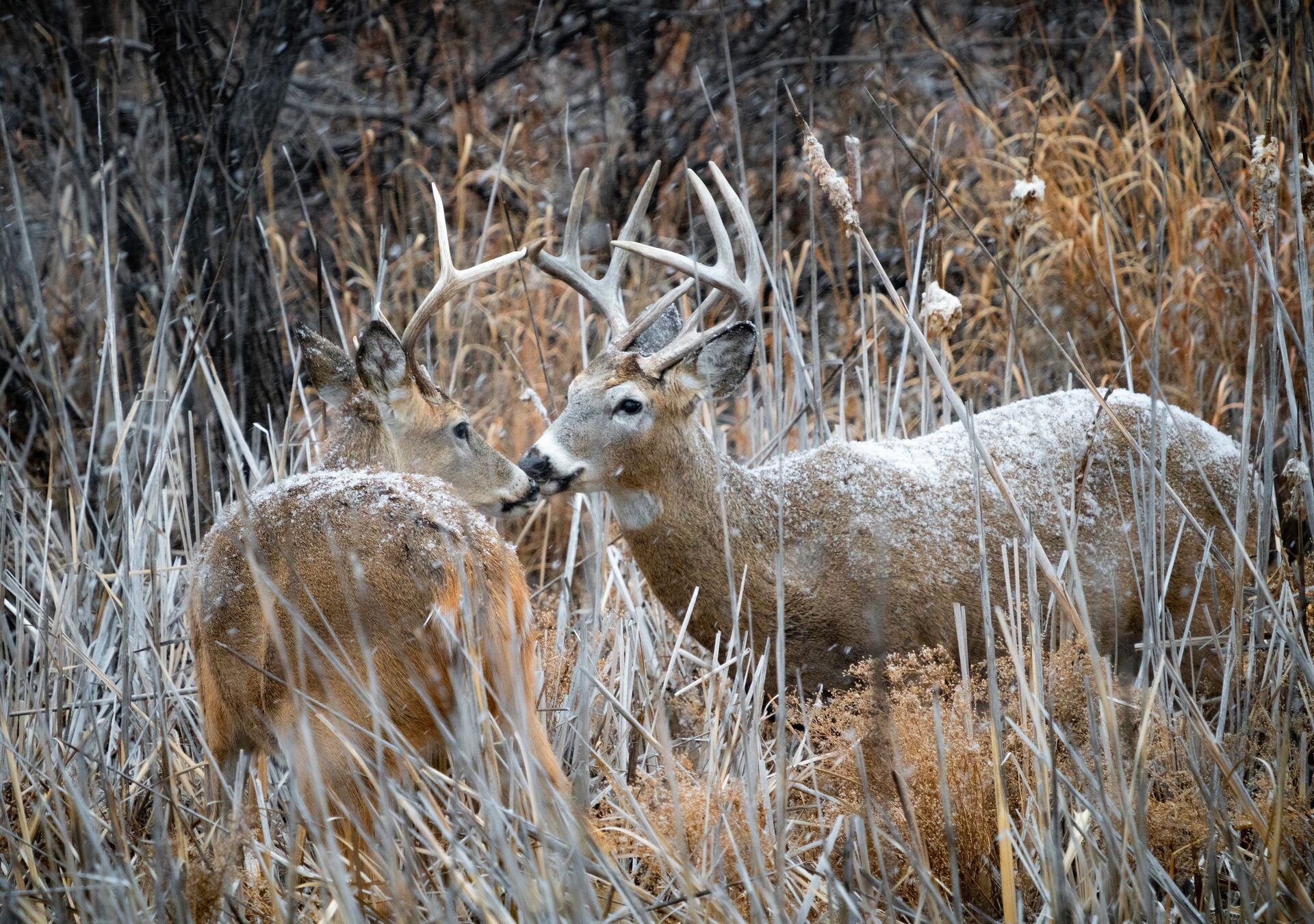
Deer Activity Increases
Significant temperature shifts and cold weather with temperature drops tend to trigger deer's internal systems, meaning they will get up and move more frequently to keep warm and search for nutrient-dense foods.
This means they may be more active during daylight hours, so keep an eye out for cold fronts on the weather channels (and in your HuntWise app).
These changes in air temperature signal to the deer that colder times are coming and that it's time to start bulking up before the temperature drops even further.
More Pressure on Resources
With fewer dining options on the menu for the deer during the colder periods, you can easily adjust your hunting strategy towards high-impact areas such as late-season crops and acorn vegetation, as these will likely be popular feeding zones.
Remember that deer are feeding to keep their body temperature high during this time, focusing on carbohydrates, fiber, and some protein. If legal, don't discount the possibility of a deer feeder during this time with some popular late-season meals like corn.
Better Visibility
During the late season, foliage has thinned out extensively, presenting more open lines of sight and viewing options. Snow can also help distinguish deer in the backdrop during cold weather deer hunting, making tracking and spotting far easier.
However, mastering the proper camouflage patterning and stealth is crucial. Remember, if it's easier for you to spot deer, it's just as easy for them to spot you.
Less Hunting Pressure
The number of hunters heading out into the field drops when the peak rut and early to mid-season pass. This can make deer less cautious and easier to pattern.
Plus, you'll likely find a wider range of hunting areas to choose from, with fewer hunters competing for the same animals in the same space.
Deer Behavior is Easy to Predict
During the late season, deer activity is very intentional and easy to predict. Bucks can still be found searching for the last does in estrus, giving hunters an advantage, especially when calling or using scent attractants.
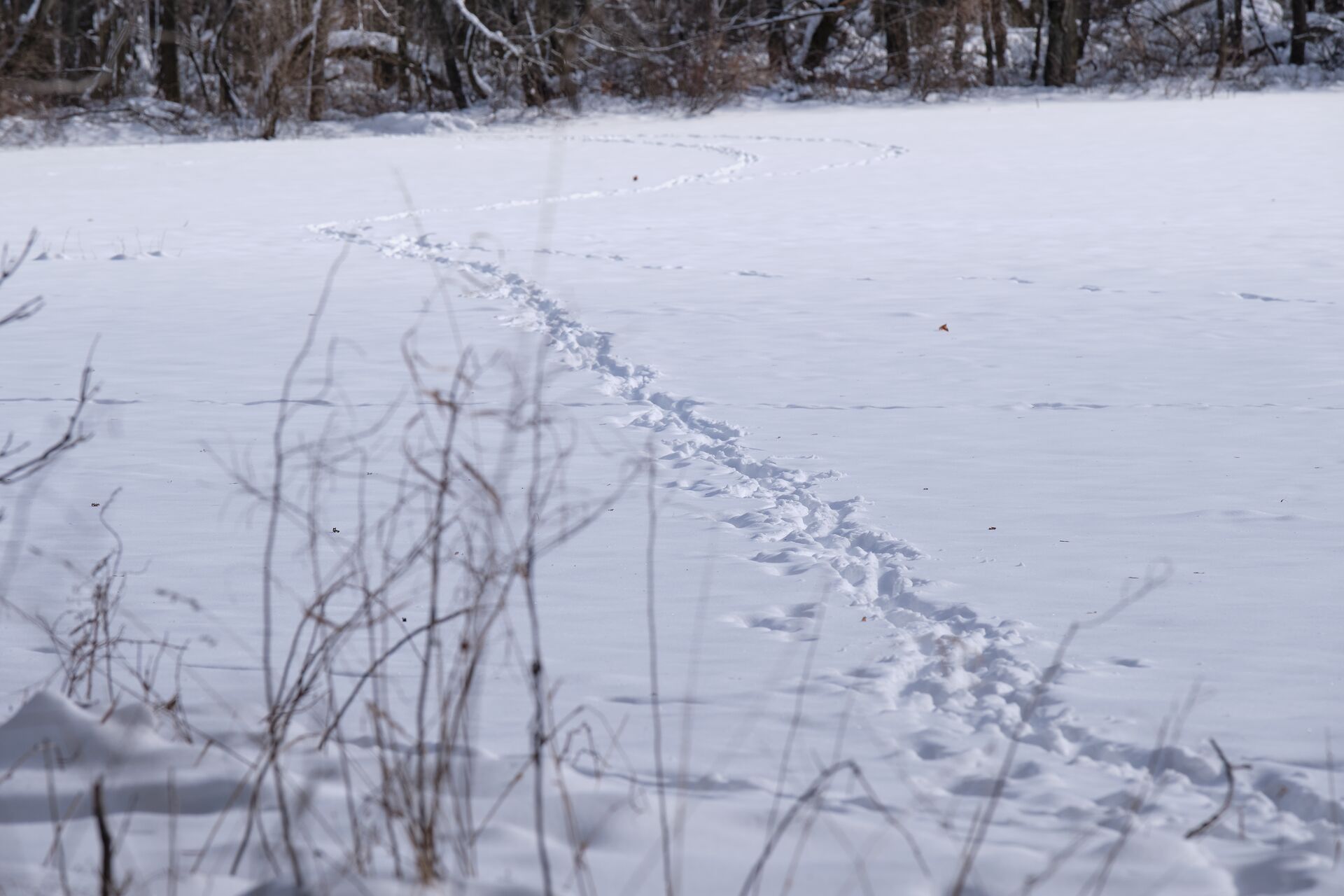
Late-Season Whitetail Tactics for Success
How can you take advantage of a late-season day in the field? What works in the early and mid seasons may not work this time of year, so try the following tips!
Focus on Food
During cooler periods, deer face feeding challenges due to limited vegetation and difficulties accessing nutrient-dense foods. At this time of year, they focus on foods that will replenish the calories they burn during the rut and build up reserves as they enter winter.
So, you should focus on crops such as corn, soybeans, and standing beans, as these are popular late-season options.
Foods high in carbohydrates and fat are highly sought as they keep deer warm, so focus on any food plots that offer this meal. Forbs and oak trees are high-impact areas if acorns or green browse are still available.
Leverage Trail Cameras
Strategic trail camera placement will help illuminate deer movement patterns during this time. After some online e-scouting, head out on foot to mark food sources and travel corridors that are likely in use.
It's important to remember that water also becomes scarce as some bodies freeze over, so finding water that's still fluid will maximize your success.
Use wireless trail cameras that send images and video content directly to your device to minimize your impact on the environment and chances of spooking deer. Adjusting your camera usage and strategies during the late and mid seasons can help you keep up with changes in deer behavior.
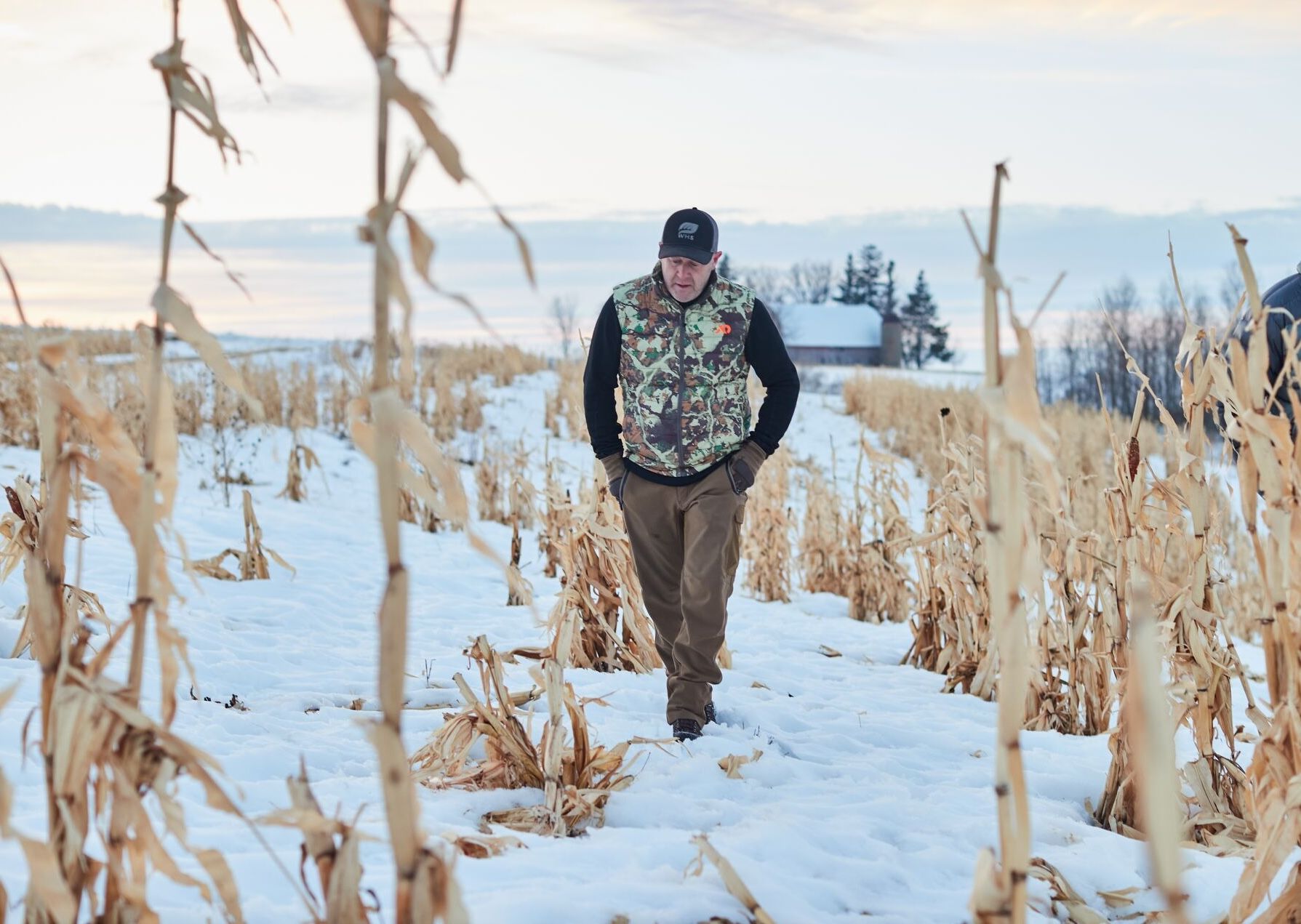
Dress Tactically
Your biggest enemy for cold weather deer hunting will be the weather. While preparation, extensive planning, and appropriate dressing are all great strategies to mitigate this, frostbite and hypothermia are real dangers.
Layering is the key to comfort, staying warm, and regulating body temperature. Opt for moisture-wicking base layers such as cotton, nylon, and polyester and insulating mid-layers such as fleece and down products.
Any waterproof outer layer will help you stay dry and maintain optimal body heat for hunting. Hand and foot warmers can also help regulate body heat by keeping your extremities warm.
Always pack a second pair of socks in the kit (essential), and consider using a liner sock if you have struggled with wet feet.
Take Advantage of the Snow and Weather
Not only does light snow encourage deer to feed and move, but it also provides the ultimate old-school stalking opportunity. Essentially, snow makes deer easier to track, and they often leave clear signs like bedding, rubs, and clear tracks.
The shift in weather patterning and moon phases can also impact deer behavior. Deer tend to fire up and are more active just before a big storm of certain moon phases. Full moons can also impact deer behavior and increase their night movement.
Use HuntCast to track the weather and changes in animal behavior to plan your late-season day in the field.
Hunt Midday
A late-season hunt offers a much-desired and uncommon advantage in the hunting world: a sleep-in.
Deer are typically more active during the warmest parts of the day, meaning you may see fewer deer during the typical dawn and dusk hunting period. Start your hunt around mid-morning and end it in late afternoon when the temperature is at its peak.
During this time, focus on bedding areas where deer will likely move out as temperatures rise slightly.
Use Calls and Scents Sparingly
Although not peak mating time, calls and scents can still be helpful. Additionally, if used sparingly, doe estrus calls can entice bucks seeking a late-season mate.
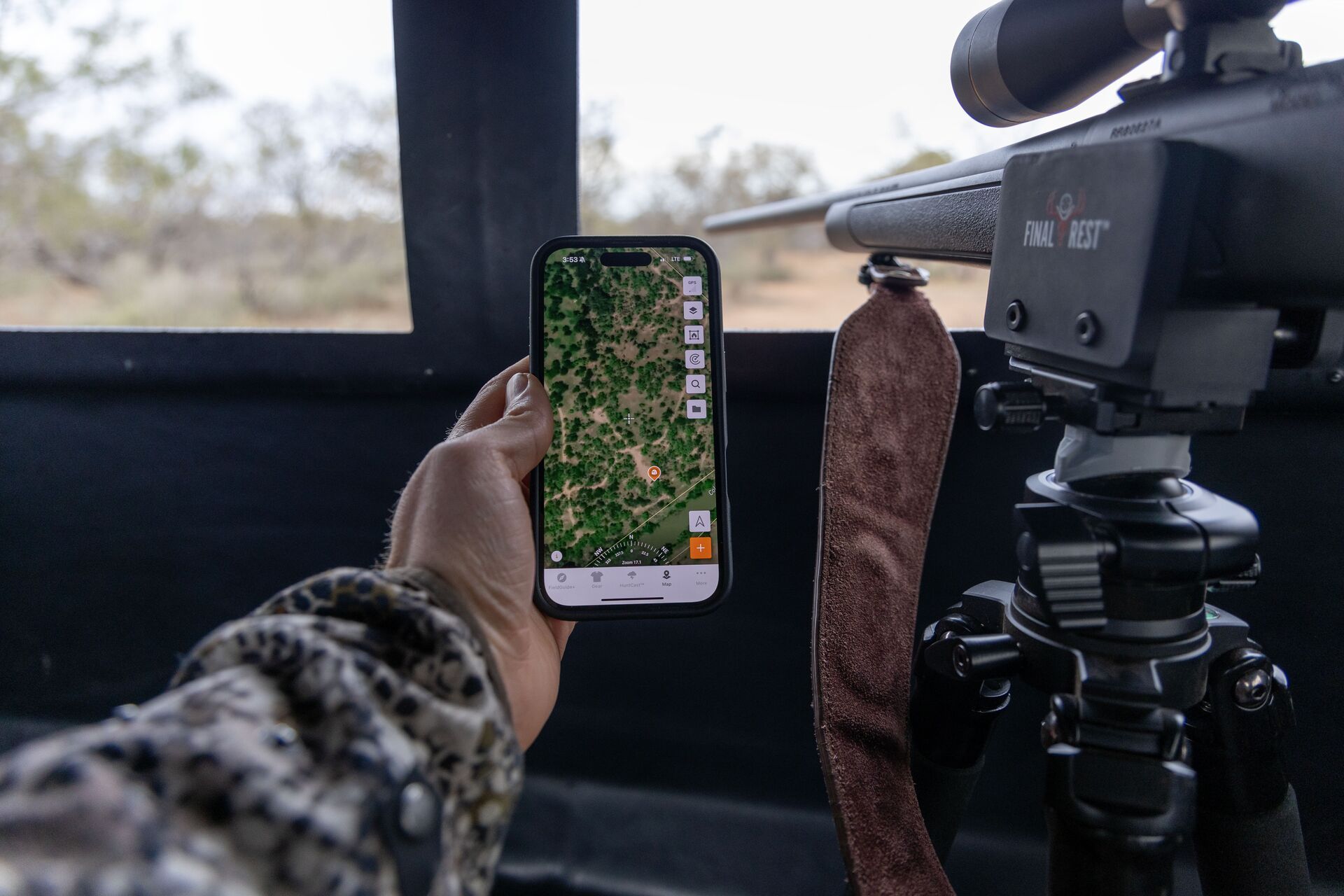
Take On Cold Weather Deer Hunting With HuntWise
Cold weather deer hunting is a great way to test your hunting skills in a challenging environment. For those willing to work hard, there can be a big payoff. With the right gear and attitude, you'll be a cold-weather convert quickly.
To prepare for the climatic conditions, deer movement, moon phases, and more, use HuntWise! This hunting app is the best tool for hunting any time of year. HuntCast and WindCast can help you plan a day in the field based on cold weather changes in deer behavior and the weather. You'll improve your efficiency in the field to reduce the amount of time you need to spend in the cold before bringing home a late-season buck!
Download HuntWise and try it free for your first week!
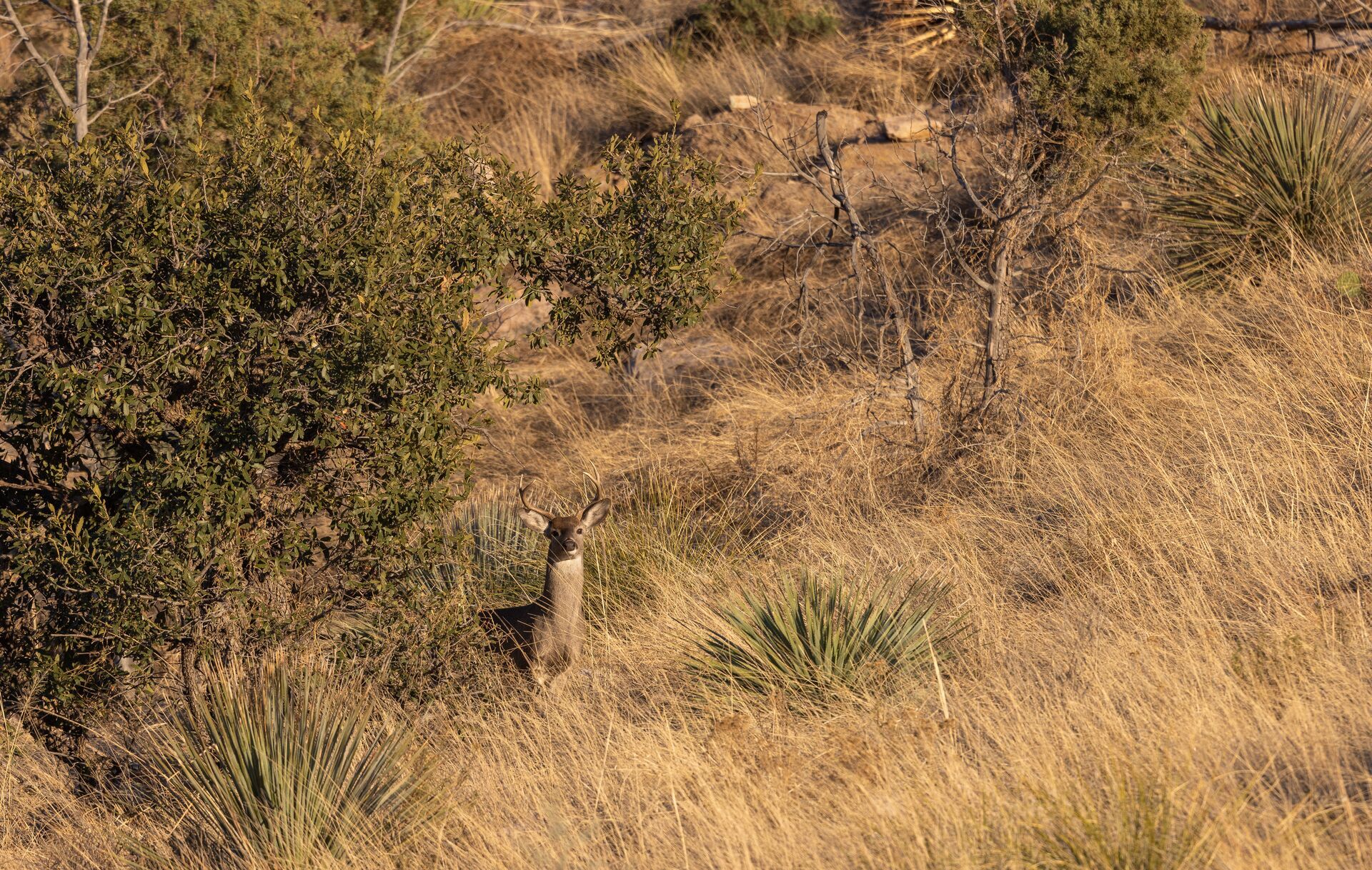
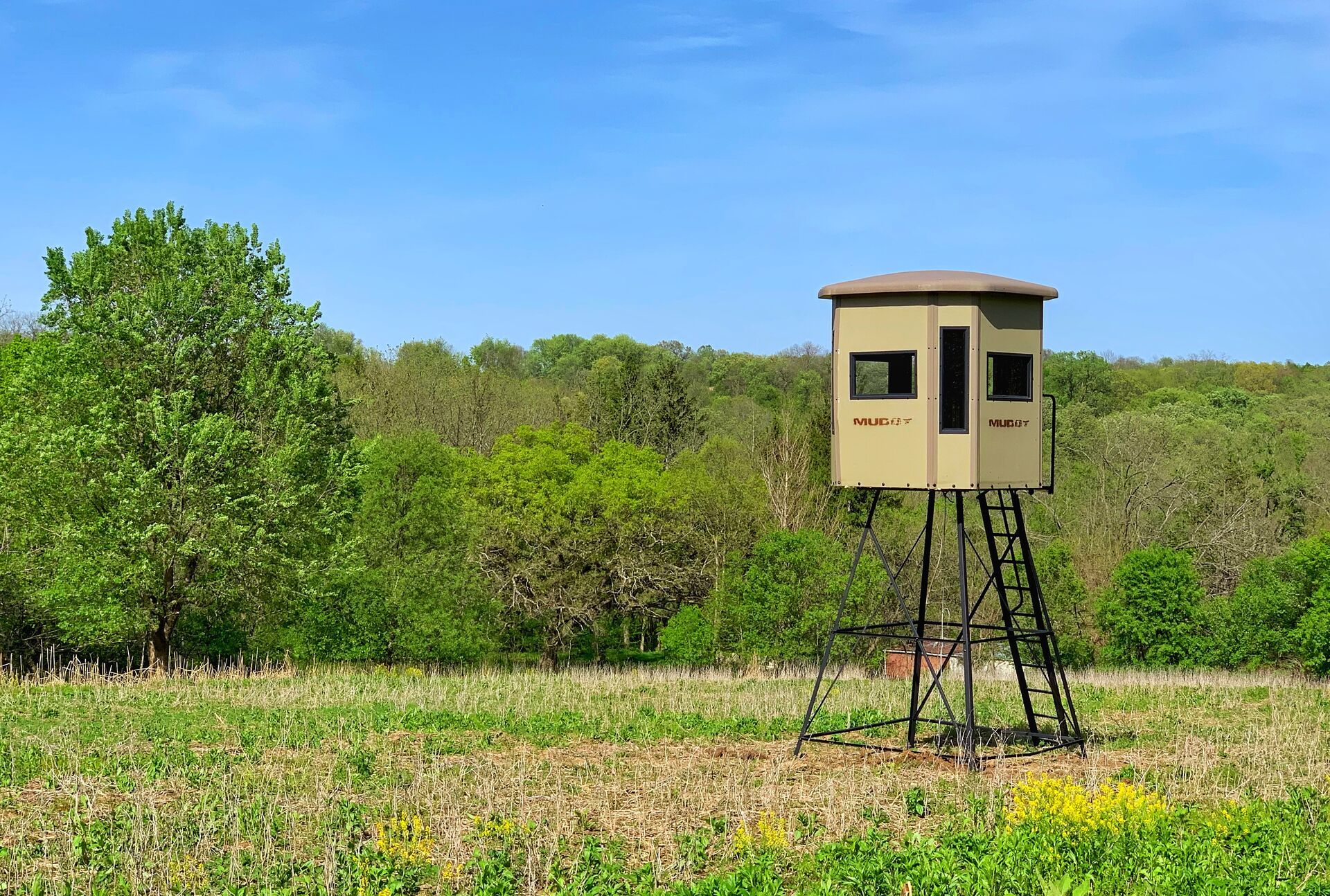
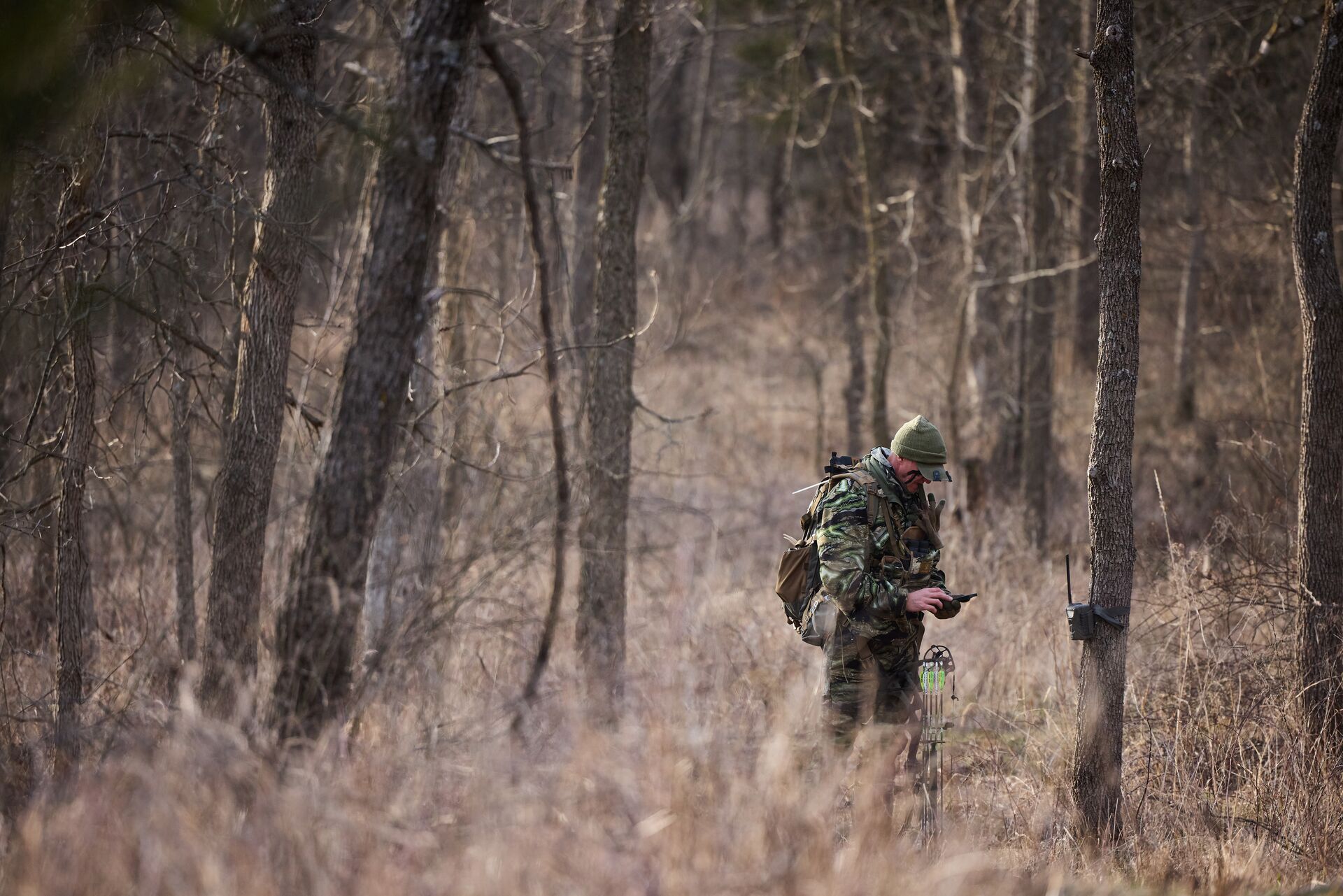
 Deer
Deer Deer
Deer Deer
Deer